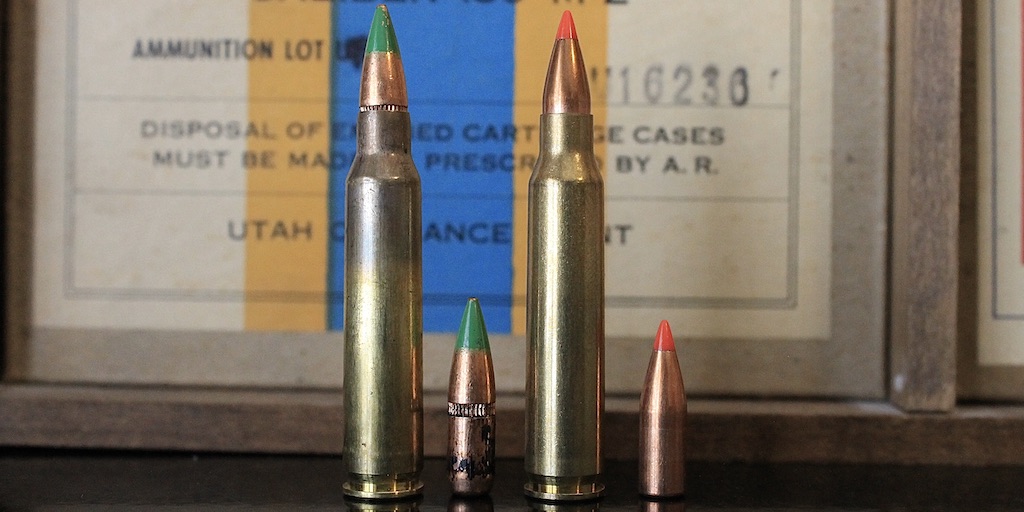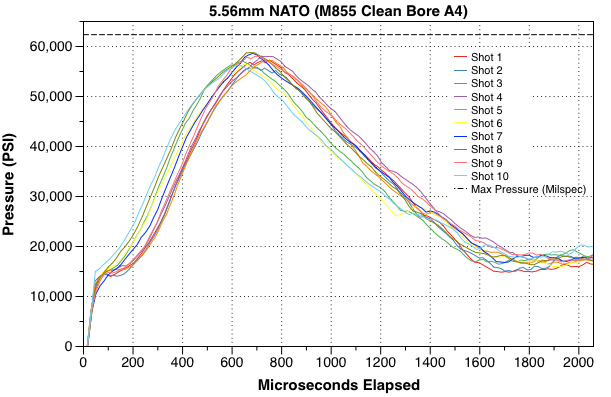223 -vs- 5.56: Facts and Myths
Posted by Veronica Arino on Oct 11th 2019
223 -vs- 5.56: Facts and Myths
Image by John McAdams: https://thebiggamehuntingblog.com/223-vs-556/
If you ever own guns, one of the first things you'll want to consider are the types of ammunition you are going to use.
Today, we're going to focus on 2 of the most common cartridges used for rifle. These are .223 Remington and 5.56 NATO. If you're familiar with these cartridges, yes, they are very similar to each other. However, there are some very subtle, yet important differences between the .223 Remington and 5.56 NATO cartridges that go beyond the differences in their names.
To start, the .223 Remington is a rifle cartridge, developed in 1957, for the ArmaLite AR-15. In 1964, ArmaLite AR-15 was adopted by the United States Army as the M16 rifle. It would later become the standard U.S. military rifle. In 1980, the .223 Remington was transformed from the 55-gr into 62-gr full metal jacket bullet with a 7-gr steel core for military applications.
The 5.56×45mm NATO is a rimless bottlenecked intermediate cartridge family developed in the late 1970s in Belgium by FN Herstal. It consists of the SS109, SS110, and SS111 cartridges. The 5.56×45mm NATO cartridge family was derived from, but is not identical to, the .223 Remington cartridge designed by Remington Arms.
Here are a few differences between .223 Remington and 5.56 NATO cartridges:
1. External case: If you look on both cartridges, you’ll see that they are nearly identical. It is not easy to identify the difference between the two. However, when you look at the case rim, for 5.56 NATO you’ll see a date code and/or a symbol engraved. On the other hand, for .223 Remington, the case rim looks just plain.
2. Working Pressure: 5.56 NATO has a working pressure of around 62,400 psi. By contrast, .223 Remington tends to produce lower chamber pressures between 52,000 and 55,000 psi, going by SAAMI specs.
3. Chamber Dimensions:The external dimensional specifications of .223 Remington and 5.56×4 NATO brass cases are nearly identical. The cases tend to have similar case capacity when measured, although the shoulder profile and neck length are not the same. 5.56 NATO cartridge cases tend be slightly thicker to accommodate higher chamber pressures. When hand loaded, care is taken to look for pressure signs as 5.56 NATO cases may produce higher pressures with the same type of powder and bullet as compared to .223 Remington cases.
The length and diameter of the leade is also called the “freebore” this is longer and wider for the 5.56mm round. This makes for a wider, longer free space that the bullet travels before it contacts the rifling in the barrel.
Specifically, .223 Remington chambers are smaller overall and have a shorter leade with a steeper angle than 5.56mm chambers. Generally speaking, a shorter leade results in increased accuracy at the expense of increased pressure and decreased velocity while a longer leade produces increased velocity with lower pressures at the expense of reduced accuracy.
Even though many people treat the .223 Remington and 5.56x45mm NATO cartridges as interchangeable rounds, this can be a dangerous practice under the wrong circumstances.
If you are still not sure after looking at the headstamp as to which ammo you are looking at, treat the ammunition as 5.56mm just to be on the safe side.
A .223 Remington ammunition may be shot safely in a 5.56mm chamber, but DO NOT shoot 5.56mm ammunition in a rifle with a .223 Remington chamber. Doing so could put you in a potentially dangerous or deadly accident.
-------
Reference: https://youtu.be/VCS4fXFmCyA




